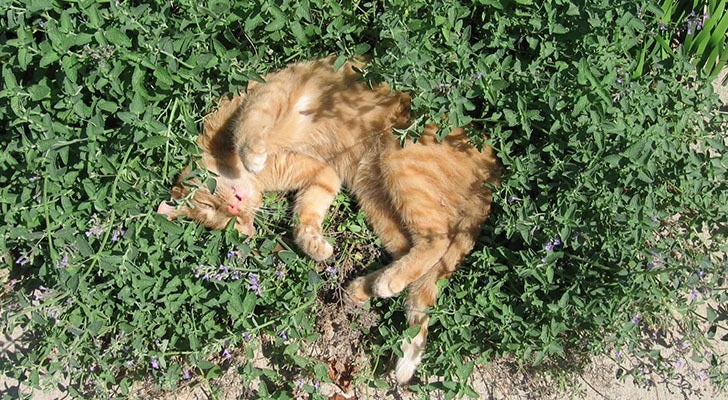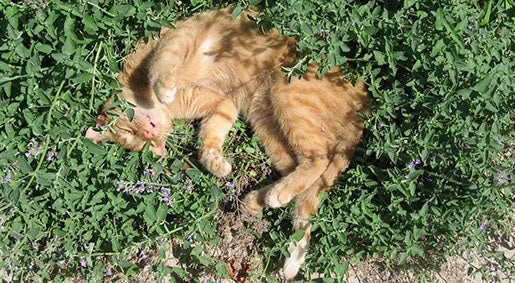Catnip isn’t just a witty name for a garden herb…. if you’ve ever seen your furry friend playing with it you know it’s something special...
The plant’s effects on kitties have been known for centuries evidenced by its scientific name, Nepeta cataria – the Latin “catari” meaning “of a cat.” History aside, there’s plenty to this feel-good herb that you might not know.
What on earth is Fluffy doing?!
Catnip and its relatives contain a chemical called nepetalactone that binds to the olfactory receptors of cats to produce its effects. In plain English this means cats smell or eat and are put under its spell.
The effects of that enchantment differ almost on a cat-by-cat basis. Some effects your kitty cold experience include:
…or your cat may not be affected at all!
Theories abound as to what exactly Fluffy is experiencing – many scientists have posited that it’s like a feline aphrodisiac while others think it creates a sensation similar to the effects of marijuana in humans!
The only agreement on the topic seems to be that about two-thirds of cats are vulnerable to its effects. Kittens tend not to respond at all but many change their tune at about six months old. It’s not only our domestic friends – many lions and tigers have also been known to fall under the catnip spell as well!
Are there any dangers?
Not in reasonable doses, as with most things. It might make you feel sickly if they eat a lot of it but generally cats know when to say when and will refuse it once they’ve had enough (just like that nice dinner you prepared for them).
Catnip has a history of medical use for humans thanks to its soothing properties. It is commonly brewed in teas as a treatment for headaches and sore stomachs. Nepetalactone, the chemical contained within catnip, also works as a mosquito and fly repellent. Rats and mice also tend to avoid catnip – so maybe Fluffy is doing you a favour by leaving her scented toys everywhere!
Can you grow catnip?
Of course! You can plant seeds and make starters indoors in late autumn or early spring. They like well-drained, sandy soil and prefer full sun (yet still grow in the shade). Keep your seedlings watered and soon you’ll find a 3-4 foot tall plant with small lavender flowers.
You can harvest leaves during summer (your cats will likely eat them right off the plant unless you keep them away from it). Store the leaves in an air-tight container in your refrigerator or freezer. Dry the leaves and you can make your own catnip toys for your feline.
So there you have it, a few thing you may not have known about catnip! Is your kitty a catnip fiend or does it do nothing for them? Send your crazy catnip pictures to us and we will share them on our Facebook page!





